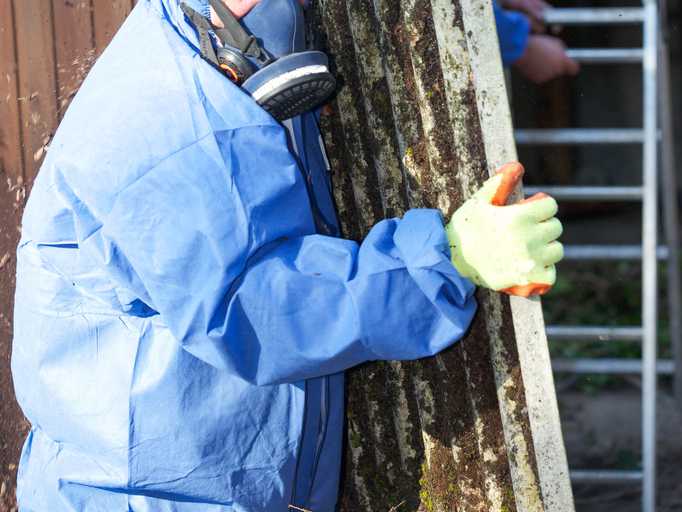What You Should Know About Asbestos
Asbestos lurking behind the walls or ceiling is an unwelcome discovery for any contractor or building owner. It can bring any renovation/demolition project to a screeching halt in order to protect workers and occupants from exposure to this hazardous material.
That’s why performing a thorough asbestos survey as a first step is crucial to the timeline and budget of your project. Let’s take a look at what you should know about asbestos.
3 primary hazards of asbestos exposure
Though asbestos can cause a wide range of health problems, the main risks fall into three categories:
- Asbestosis: Permanent scarring of lung tissue
- Pleural disease: Damage to the lining of the lungs
- Lung cancer and mesothelioma: Tumors and cancerous cells that attack the lungs
Asbestos is a known carcinogen which has no “safe” level of exposure. Health effects from asbestos can crop up 20 to 40 years after exposure.
Thus, reducing asbestos risks today produces benefits that last decades.
Why asbestos is so dangerous
Asbestos is not a chemical or a synthetic compound. It’s a commercial and legal catch-all term describing six naturally occurring minerals. They come in two categories:
- Serpentine asbestos, also called white asbestos. Chrysotile is the only mineral in the serpentine category, and accounts for approximately 95% of all asbestos used historically worldwide.
- Amphibole asbestos, which includes amosite (brown asbestos), crocidolite (blue asbestos), anthophyllite, tremolite, and actinolite.
These minerals are resilient, durable, and heat-resistant. They don’t dissolve in water; microbes like bacteria cannot break them down.
The fibrous nature of asbestos minerals makes them an excellent fit in a vast range of industrial settings. Asbestos fibers can be woven into insulation, ceiling materials, and brake pads for cars and trucks.
Individual asbestos fibers are so small we cannot see them. When people breathe them into their lungs, the fibers stay put, and the more exposure, the greater the potential for lung damage.
Although the EPA began phasing out many asbestos-containing products in the 1970’s, the manufacture, importation, processing and distribution in commerce of several other products, such as joint compound, roofing felt, and vinyl floor tile, is not banned and these products are still available in the market today; however, asbestos is regulated both by the EPA and OSHA and personnel dealing with asbestos containing materials must be properly trained and certified to protect workers and general population from exposure.
Learn more about the risks of asbestos exposure by visiting The Mesothelioma & Asbestos Center.
Asbestos liabilities and litigation
Asbestos exposure has been called the source of the greatest tort liability in U.S. history. Court records showed that some manufacturers of asbestos-related products knew about the hazards for decades and willfully downplayed them.
More than $30 billion in trust funds have been set aside to help the victims of asbestos exposure. These funds have spawned a cottage industry in asbestos-related litigation.
Asbestos liability claims are extremely complex. It’s difficult for a victim to get adequate compensation if the exposure happened 25 years ago, but it’s also a legal quagmire for defendants trying to deflect claims of negligence.
These realities underscore the necessity to weigh asbestos hazards carefully and to act decisively at the first sign of trouble.
Asbestos risk assessments and abatements
One of our core specialties at CTL Engineering is helping companies identify asbestos risks and figure out what to do about them. Our staff is experienced and State Certified for various activities associated with asbestos assessment and abatement.
Our asbestos expertise includes:
- Asbestos hazard evaluations: AHERA inspections and NESHAPS pre-demolition and renovation surveys.
- Asbestos project design: Creating bid specifications, selecting contractors, developing management plans, and estimating costs.
- Asbestos abatement oversight: Supervising the process of removing asbestos including air monitoring, sampling, and analysis.
We understand what’s at stake with asbestos hazards. Not only can project budgets and deadlines be critically impacted, but these tiny fibers also damage lungs, ruin lives, and litigation can tie up companies for years.
Construction projects, building renovations and demolitions, and industrial site cleanups all create exposures to asbestos risk. Talk to our experts and let us steer you away from these unseen hazards.

